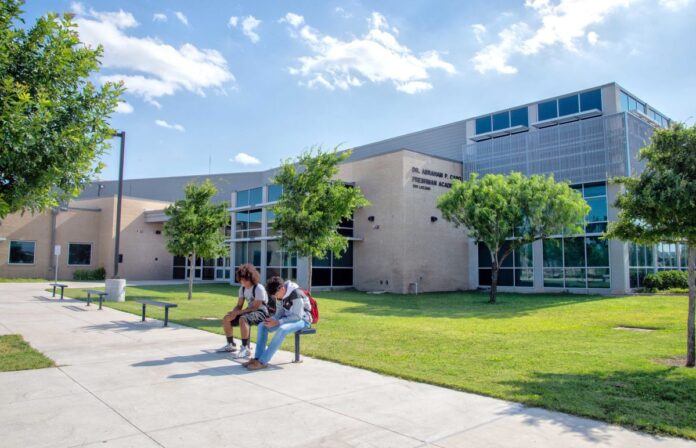HARLINGEN — They did it.
The students, administrators and faculty of the Dr. Abraham P. Cano Freshman Academy have performed so well, they’ve been recognized by U.S. News and World Report with a bronze rating.
“This is the first time Cano has been recognized,” said Alicia Noyola, chief academic officer for the Harlingen school district.
Principal Vivian Bauer was delighted by the news.
“We at Dr. Cano Freshman Academy are extremely proud of the designation,” she said. “All our hard work in the last five years is rewarded. Our students, teachers and support staff are the best!”
Noyola said the district opened Cano five years ago to impact students and do something different for freshmen.
“To see this campus is accomplishing what it’s accomplishing really validates the decision we made to open a ninth-grade campus,” Noyola said.
U.S. News and World Report ranks schools across the country each year and awards gold, silver or bronze medals based on several criteria.
Early College High School also earned a bronze rating. U.S. News and World Report has recognized that school several times.
“They have been doing an excellent job at that campus for many years now,” Noyola said. “We know our schools are doing an excellent job for the children in our community.”
Noyola explained the ratings are based on four criteria.
“The first step that they look at is how students at each of these high schools are doing in their own state assessments and whether they’re exceeding expectations,” Noyola said. “The second criteria that they look at is how underserved students are performing and if they’re performing better than the state average in reading and math.”
The publication also looks at a school’s graduation rates and how well the schools are preparing their seniors for college.
“They measure that particular one by how students are testing on Advanced Placement coursework,” Noyola said.
Cano, being a ninth grade campus, doesn’t have graduation rates nor do they offer Advanced Placement courses.
“Cano was evaluated on the first two pieces,” she said, referring to how well underserved students are performing in reading and math as well as their scores on state assessments in general.
“At Early College High School which they did evaluate on all four criteria,” she continued. “The one disadvantage is that Early College works on dual enrollment programming. They don’t take a lot of AP exams.”
That means that, in this criteria, ECHS couldn’t contribute much.
“It’s wonderful that in spite of that they were still recognized as one of the top high schools,” she said.
STEP 1 | Students exceeded expectations in their states.
Judges looked at whether each school’s relative performance in its state reading and mathematics assessments exceeded expectations, factoring in the proportion
of its student body that is economically disadvantaged and projected to score lower.
STEP 2 | Underserved students performed better than the state average.
Next, judges compared each school’s reading and mathematics assessment scores among only their historically underserved students – black, Hispanic and low-income – with the average statewide results for these subgroups. We selected schools that outperformed their state averages.
STEP 3 | Student graduation rates met a threshold.
Judges excluded schools from consideration if their graduation rates were lower than 80 percent.
STEP 4 | Students were prepared for college-level coursework.
For schools passing the first three steps, judges calculated a College Readiness Index based on the percentages of each school’s students who took and passed AP and IB exams. Tiebreakers determined the ranks of schools achieving the same CRI.
Gold
Top 500 Schools based on highest college readiness.
Silver
High-performing schools based on lower college readiness.
Bronze
High-performing schools based on state exam performance, listed alphabetically.




